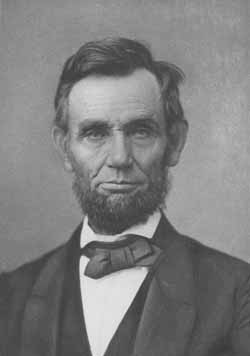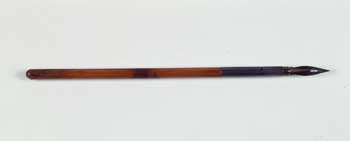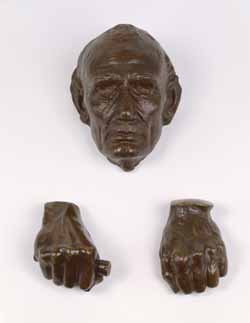Implementing Technology in Current Jefferson Exhibition was a TAG Team Effort
By Nancy Heywood, Collections Services
Last fall, as the Massachusetts Historical Society planned its current exhibition, The Private Jefferson, an interdepartmental team of staff members successfully pursued a wonderful opportunity to incorporate technology into the galleries. Thanks to the efforts of Gavin Kleespies, Director of Programs at MHS, and Ryan Gaspar, Director of Strategic Partnerships, Microsoft, MHS staff members were able to showcase MHS digital content in an interactive content management system for exhibitions, Touch Art Gallery (TAG). Numerous high resolution digital images, short videos, and interactive features are available on a variety of touchscreen devices within the Jefferson exhibition.
TAG was developed by a team of programmers (mostly undergraduate computer science students) at Brown University led by Professor Andries van Dam, the Thomas J. Watson Jr. Professor of Technology and Education. Carolyn Gress, Marketing Project Manager, Microsoft, coordinated a meeting in October between some staff from the MHS and Professor van Dam and some of his students. During the visit to Providence, Rhode Island, MHS staff saw and interacted with the digital museum experience they created using TAG for the Nobel Foundation.
Notable features of the TAG system include: the display and delivery of high resolution images of exhibition items and their associated metadata in various sets ("collections"); management of related material including audio and video clips; and interactive segments on topics ("tours"). Gallery visitors can browse the items, "grab" and zoom in to closely examine the high resolution digital images, select, start (and interrupt) the interactive tours to closely examine the featured images.
Due to several previous grant-funded digitization projects, MHS has many existing high resolution digital images of documents within the Coolidge Collection of Thomas Jefferson Manuscripts. These digital assets and the existing metadata were good starting points for the implementation of TAG within the Jefferson exhibition, but it took intensive work and effort by many staff members to ready the digital features by the opening date of the Jefferson exhibition.
The digital team (Laura Wulf, Peter Steinberg and I) had to work efficiently to assemble over a hundred images and descriptions. Bill Beck, MHS's web developer, worked with Trent Green (the Brown University student who our main contact for TAG server and software issues) on the batch ingest and overall configuration of the system. Several staff members (Gavin, Sara Sikes, Sara Georgini, Peter Drummey and I) focused on the content for six interactive features and developed outlines and scripts to tell specific stories about the Jefferson materials. The production of those interactive tours was truly a team effort with Gavin and Bill taking the lead on many sequencing and editing tasks; the digital team assembling more images; Sara, Sara and Peter providing narration for some tours; and Jim Connolly and Hobson Woodward recording additional audio clips. Three staff members, Chris Coveney, Carol Knauff and Laura Lowell, provided excellent feedback regarding the multimedia overviews (the "tours").
 The digital content and the touch screens of various sizes--ranging from one large (65") screen to two Dell All-in-Ones and one Microsoft Surface tablets--had to be physically incorporated into the exhibition. Gavin worked with exhibition designer Will Twombly and MHS's Chris Coveney to ensure that the screens were accessible and functional in the gallery spaces.
The digital content and the touch screens of various sizes--ranging from one large (65") screen to two Dell All-in-Ones and one Microsoft Surface tablets--had to be physically incorporated into the exhibition. Gavin worked with exhibition designer Will Twombly and MHS's Chris Coveney to ensure that the screens were accessible and functional in the gallery spaces.
The result of so many people's efforts with the planning meetings, the configurations, the production tasks and deployment steps is an exhibition celebrating MHS's 225th anniversary with significant historical manuscripts (the core of the collections) as well as value-added digital content on current touch-screen devices. We strived to make the digital content as informative and user-friendly as possible.
Please visit the Jefferson exhibition to examine both the original manuscripts on display as well as the digital components on the touch screen devices in the galleries. Professor van Dam and some of his students will be giving a gallery talk about the development of the Touch Art Gallery system on Friday, May 13, at 2PM.
Image: Screenshot of a tweet Liz Loveland sent during the Jefferson exhibition opening with an image of a manuscript page from the Farm Book delivered on a touch screen device.
comments: 0 |
permalink
| Published: Wednesday, 11 May, 2016, 8:00 AM
Homegrown Gifts: George Washington’s Locks
By Andrea Cronin, Reader Services
Our exhibition Father of His Country Returns to Boston closes today as the holiday season wraps up. The exhibition commemorates the 225th anniversary of President George Washington’s month-long tour of New England in October 1789. One of the most interesting items on display as part of this exhibition is a lock of hair that George Washington gave to Alexander Hamilton.
Hamilton worked closely with Washington throughout the American Revolution and their political careers. Hamilton was born the second illegitimate child of James Hamilton and Rachel Faucett Lavien on 11 January 1755 or 1757 in Charlestown on the island of Nevis in the British West Indies. He worked as a clerk until he traveled to the British North American colonies for education. In New York, Hamilton became increasingly involved in the rumblings of Revolution during his studies at King’s College before responding to a call for recruits in 1776. Washington appointed Hamilton to the position of aide-de-camp at the rank of Lieutenant Colonel on 1 March 1777. Washington mentored Hamilton as he did with all his aides-de-camp until a parting of ways in February 1781 when Hamilton resigned from Washington’s staff position over insult. However, their working relationship did not end there. Washington later appointed Hamilton as first Secretary of the Treasury in September 1789 just before the President’s tour of New England commenced in October. The circumstances surrounding the gift of Washington’s hair to Hamilton however remain undocumented.
The practice of gifting hair seems particularly strange to the 21st century observer. Nowadays people share photographs of themselves and their families in holiday cards or digitally through social media. Portraiture remained the primary way individuals shared images of themselves prior to the invention of the daguerreotype by Louis Daguerre in the late 1830s. But the gift of hair also held considerable value. Hair was often woven and incorporated into rings, bracelets, and other jewelry throughout the 18th century. Lovers, friends, and family often exchanged locks of hair as mementos. Vestiges of hair traditions remain even today when parents save locks of their children’s hair.
The Massachusetts Historical Society has not just one but two separate locks of hair that George Washington gave to Alexander Hamilton. Mrs. Charles Mason donated the first singular lock to the Society on 11 May 1876. The second lock of Washington’s hair is framed together with a lock of Hamilton’s own hair. The son of Alexander Hamilton, James A. Hamilton of Nevis, gave these locks to Eliza Andrew, wife of Massachusetts Governor John Albion Andrew, on 27 October 1865. The Society later received the locks from Andrew’s children, Edith and Henry Hersey Andrew in December 1920.

The text of the frame states:
“The above is the hair of my Father
Alexander Hamilton, presented
by me to Mrs. Andrew
Octo. 27 1865
James A. Hamilton”
“The above is the Hair of “The Father
of his Country” Geo. Washington pre=
sent to his friend Mrs Andrew by
James A. Hamilton
Nevis
Oct 27 1865”

Marble bust of Alexander Hamilton by Giuseppe Ceracchi, 1794
Their working relationship tempered by respect endured any snarls. Washington’s death on 11 December 1799 came as a great loss not only to the country he fathered but also to his former mentee. In a letter to Washington’s personal secretary Tobias Lear on 2 January 1800, Hamilton wrote, “Perhaps no man in this community has equal cause with myself to deplore the loss. I have been much indebted to the kindness of the General, and he was an Aegis very essential to me.”
comments: 0 |
permalink
| Published: Friday, 9 January, 2015, 1:00 AM
Margaret Hall’s WWI Memoir: The Book, the Talk, the Exhibition
By Jim Connolly, Publications
I’ve posted on the Beehive a few times about Margaret Hall, a Massachusetts woman who volunteered with the American Red Cross in France during World War I. So you may know (and if you didn’t, now you do!) that her memoir and selected photographs from her war experience will be published for the first time in the Society’s forthcoming book, Letters and Photographs from the Battle Country: The World War I Memoir of Margaret Hall. The MHS will publish the volume on 14 July 2014.
Come celebrate the release of Letters and Photographs from the Battle Country on Tuesday, 15 July 2014, when the volume’s editor, Margaret R. Higonnet, will give a talk titled “‘What is Focus?’ Margaret Hall’s Battle Country.” The program will run from 6:00 to 7:30 PM following a pre-talk reception at 5:30 PM. This event is free but requires an RSVP. Register online or call the MHS reservations line at 617-646-0560.
And while you’re in the Society’s 1154 Boylston Street building, you can take in our current exhibition, Letters and Photographs from the Battle Country: Massachusetts Women in the First World War. Until then, you can get your Margaret Hall fix from July’s Object of the Month.
comments: 0 |
permalink
| Published: Friday, 11 July, 2014, 8:00 AM
Commemorating the Emancipation Proclamation

Tuesday, 1 January marks the 150th anniversary of the signing of the Emancipation Proclamation. As part of the Society's ongoing celebration of the sesquicentennial of the Civil War we have staged two related exhibitions, both of which will open on Monday, 1 January with special exhibition hours (12:00 PM to 4:00 PM) and a public program (details below).

Forever Free, features the pen Abraham Lincoln used to sign the Emancipation Proclamation, and a number of paintings, broadsides, engravings, and manuscripts that tell the story of how Boston celebrated Emancipation.

Lincoln in Manuscript and Artifact offers visitors an opportunity to view Lincoln's letter to Joshua F. Speed explaining his evolving views on slavery as well as the casts of the life mask and hands of Lincoln made by Leonard Volk in the spring of 1860.
At 2:00 PM on New Years Day, MHS Librarian Peter Drummey and Curator of Art Anne Bentley will guide visitors through the story of when the news arrived in Boston on New Year’s Day 1863 that Lincoln had signed the Emancipation Proclamation, focusing on how this epochal event in American history became an extraordinary moment in Boston history, and how the pen Lincoln used to sign the proclamation became one of the most treasured artifacts in the MHS collection.
comments: 0 |
permalink
| Published: Sunday, 30 December, 2012, 12:00 PM
Mourning Jewelry: A Spooky Tradition?
By Jim Connolly, Publications
Halloween approaches and the MHS has decked the halls with skulls, skeletons, and scythes. Or if you don’t find those creepy, then how about rings full of human hair? How about a brooch featuring a snake eating its own tail (the ouroboros, a symbol of eternity—in itself a scary thing!)?
The spooky objects on display are part of the exhibition In Death Lamented: The Tradition of Anglo-American Mourning Jewelry, as described in a previous post. The season is right for a closer look at one of the most haunting and emblematic pieces in the exhibition.

This ring, part of the MHS collections, commemorates John Gray, the infant son of John and Mary Otis Gray and nephew of political writer Mercy Otis Warren. John died at only six days old. The ring has a design of three joined enameled scrolls and a gold foil skull under a square crystal. The inscription that runs around the outside of the band reads, “J:GRAY OB·17·SEP 1763·Æ 6D,” meaning “John Gray died 17 September 1763 aged 6 days.” Less than two months after the infant’s death, his mother died as well, and a ring was made in her memory.
While skull imagery might seem outré today, it was commonplace in both memento mori jewelry and mourning jewelry before the neoclassical style. Jewels bearing skulls, skeletons, gravediggers’ tools, and other seemingly grim images served to remind the wearer that they will die and should therefore live with the next world in mind. Or, as another ring’s inscription eloquently puts it, “A good life a happie death.”
To learn more about mourning jewelry, and to see some truly beautiful and affecting pieces, visit In Death Lamented: The Tradition of Anglo-American Mourning Jewelry at the MHS. The exhibition is free and open to the public. The full-color companion volume, written by the exhibition’s co-curator Sarah Nehama, can be purchased in person at the MHS or online at Amazon.com and Barnes & Noble.
comments: 0 |
permalink
| Published: Friday, 19 October, 2012, 10:00 AM
older posts




 The digital content and the touch screens of various sizes--ranging from one large (65") screen to two Dell All-in-Ones and one Microsoft Surface tablets--had to be physically incorporated into the exhibition. Gavin worked with exhibition designer Will Twombly and MHS's Chris Coveney to ensure that the screens were accessible and functional in the gallery spaces.
The digital content and the touch screens of various sizes--ranging from one large (65") screen to two Dell All-in-Ones and one Microsoft Surface tablets--had to be physically incorporated into the exhibition. Gavin worked with exhibition designer Will Twombly and MHS's Chris Coveney to ensure that the screens were accessible and functional in the gallery spaces.


